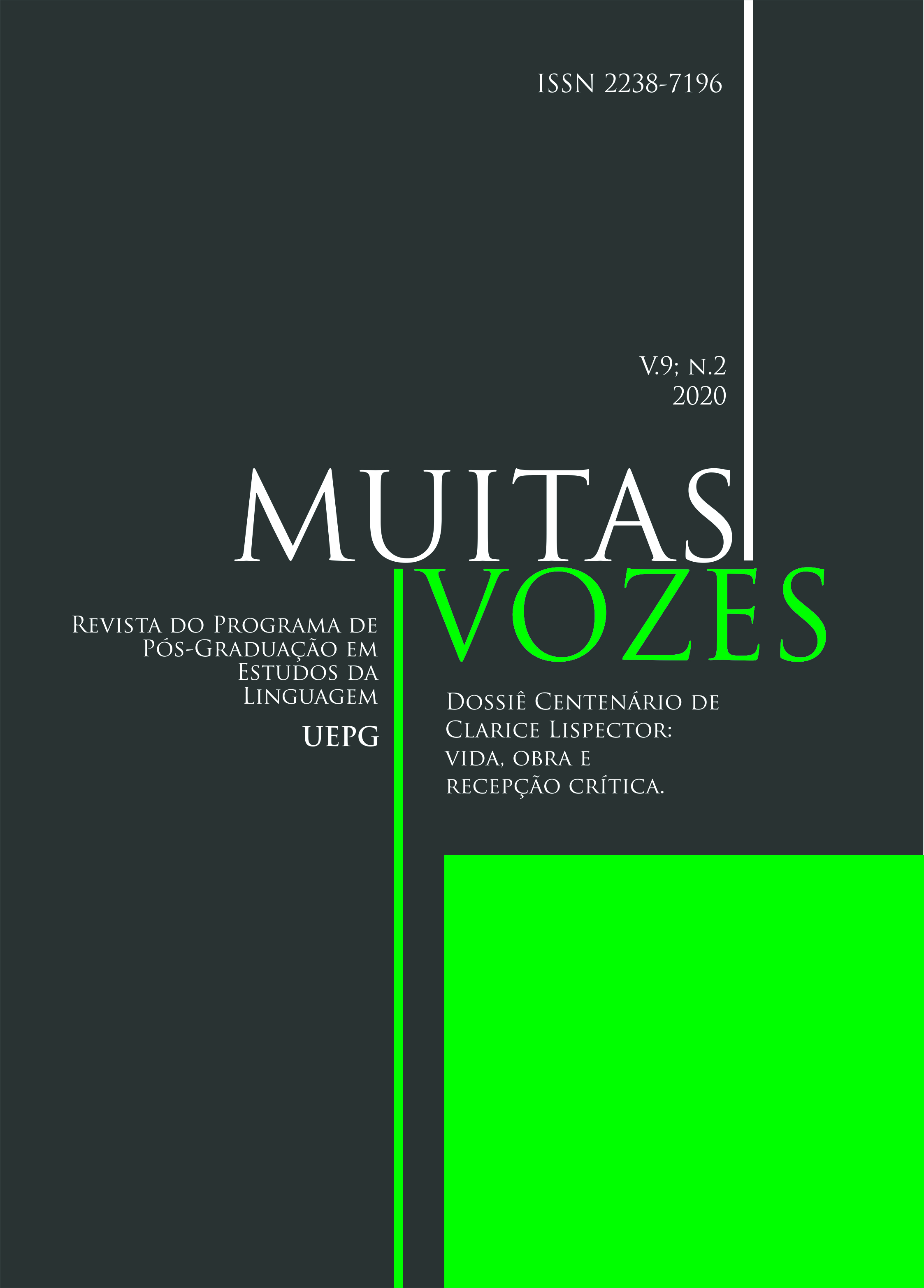G.H., MULHER DO FIM DO MUNDO
Resumo
Este texto aborda a obra A paixão segundo G.H., de Clarice Lispector, tomando-a a partir de um trabalho de escrita literária pensado como operação de produção do sensível na existência. Um trabalho que, mais do que produzir sentidos ou gerar interpretações que nos ajudariam a entender o mundo, fazem mundos, produzem formas próprias, capazes de atribuir configurações diferentes à existência e ao seu pensamento. No caso da obra de Lispector, tal processo dá-se não pela construção de um novo mundo qualquer, mas pela derrisão das definições e das finalidades desse mundo, cuja possibilidade manifesta- se no encontro entre G.H. e a barata. Tal relação opera, então, uma altercação não apenas de G.H. com o animal, mas a colocação em questão da existência da humanidade, na medida em que ela se faz paradigma dessa relação. Para tanto, operamos por meio de quatro registros, evidenciando como desdobramento o procedimento dessa possibilidade: desabamento, aberto, devir e informe, partindo de autores como Giorgio Agamben, Gilles Deleuze e Felix Guattari e Georges Bataille. Mais do que uma parada da possibilidade de entender a humanidade em G.H., deparamo-nos com uma máquina reterritorializante profundamente deslocada, fora do humano e fora do sentido.
Downloads
Downloads
Publicado
Como Citar
Edição
Seção
Licença

Este obra está licenciado com uma Licença Creative Commons Atribuição 4.0 Internacional.
Transferência de direitos autorais: Caso o artigo submetido seja aprovado para publicação, JÁ FICA ACORDADO QUE o autor AUTORIZA a UEPG a reproduzi-lo e publicá-lo na REVISTA MUITAS VOZES, entendendo-se os termos "reprodução" e "publicação" conforme definição respectivamente dos incisos VI e I do artigo 5° da Lei 9610/98. O ARTIGO poderá ser acessado tanto pela rede mundial de computadores (WWW - Internet), como pela versão impressa, sendo permitidas, A TÍTULO GRATUITO, a consulta e a reprodução de exemplar do ARTIGO para uso próprio de quem a consulta. ESSA autorização de publicação não tem limitação de tempo, FICANDO A UEPG responsável pela manutenção da identificação DO AUTOR do ARTIGO.



